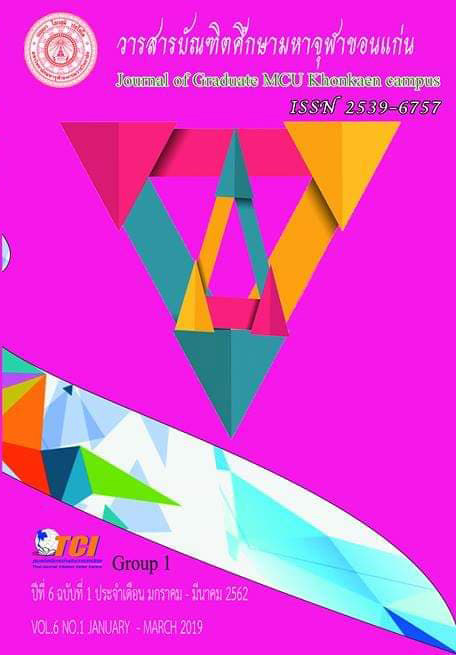Buddhism in the Silk Road:History, Archaeological evidences and Development of Human Civilization
Main Article Content
Abstract
This research aims were to study the history of Buddhism, archaeological evidences of Buddhism and human civilization along the silk road. It was a qualitative research focus on the study of evidences and archaeological, historical documents. It was also field trip to civilization areas in Xinjiang province of China and Bihar state of India. The data analyzed by using descriptive method.
The results of study were found that:
1. The silk road was an ancient trade route in the continent of Asia connecting West and East. Buddhism began to propagate after the third Buddhism council. It has been widely respected until the 1700’s B.E.
2. Archaeological evidences of Buddhist along the silk road were Buddha Images, Pagoda, cave piercing, architecture scripture collection which appeared in India, Pakistan, Afghanistan, Tajikistan and China.
3. Human civilizations along the silk road were exchange money, religion, politics, government, culture, customs including human innovation, such as, recording, cave drilling, architecture and mummification.
Article Details
References
Kong: Odyssey Books.
Chou Hsiang Kuang, (2001). A History of Chinese Buddhism. Allahabad:
Bhakti Sajjan at the Belvedere Printing Work 1955.
Chew Suulun. (2004). Xuanzang Travel archives to the west of great Tang
Dynasty. Online. Retrived May, 29 2018. from:
https://mgronline.com/china/detail/9490000104452
Elisseeff, Vadime (2001). The Silk Roads: Highways of Culture and
Commerce. UNESCO Publishing / Berghahn Books.
Fan jinshi. ( 2017). China Dunhuang. Jiangsu: Jiangsu fine Arts.
Jerry Bentley. (1993). Old World Encounters: Cross-Cultural Contacts and
Exchanges in Pre-Modern Times. New York: Oxford University
Press.
Nipat Yamdate. (2015). From King Ashoka, the Great Paragon of Virtue, to
King Jayavarman VII’s Dedication : Interpretations of the
Inscriptions Found on the Aarogyasala. Damrong Journal, 14(1),
169-204.
PhraDhammapitaka (P.A.Payutto). (2000). Ashoka inscription. Bangkok: Dan
Suthatha Printing.
Rak Dhamisra. (2001). The Silk Road. Bangkok : Usa Printing.
Mahachulalongkornrajavidyalaya University. (1996). Thai Tripitaka
Mahachulalongkornrajavidyalaya University Edition. Bangkok:
Mahachulalongkornrajavidyalaya Printing House.
Mahachulalongkornrajavidyalaya University. (2013). Thai Tripitaka.
Mahachulalongkornrajavidyalaya University Edition.
Bangkok: Mahachulalongkornrajavidyalaya Printing House.
Wikipedia Free encyclopedia, Xuánzàng. (2017). Search 4 September 2013,
from : https://th.wikipedia.org/wiki
Wilhelm Geiger. (2000). The Mahavamsa or the Great Chronicle of Ceylon.
New Delhi: Subham Offset Press.
Xinru, Liu. (2010). The Silk Road in World History. New York: Oxford
University Press.

